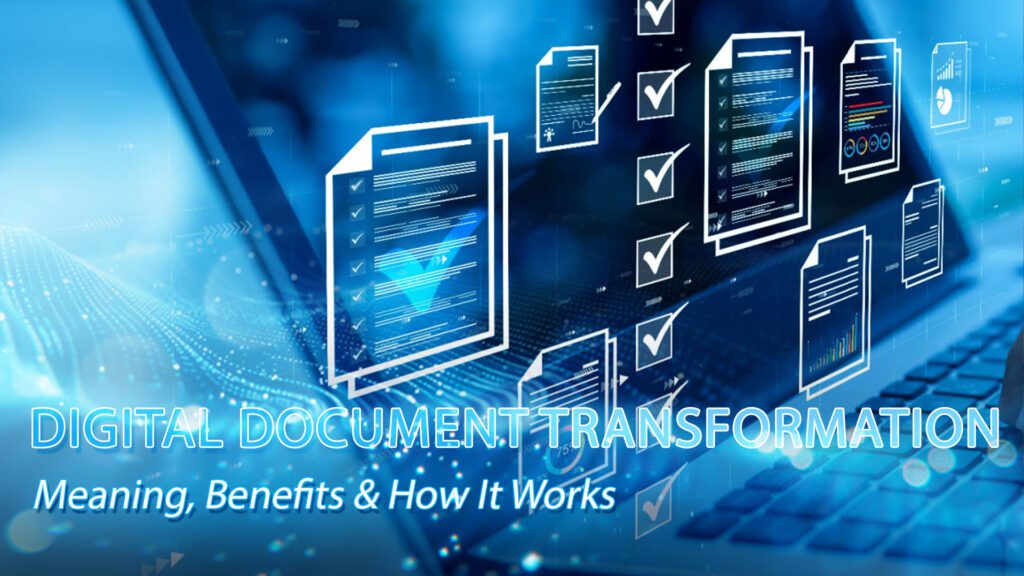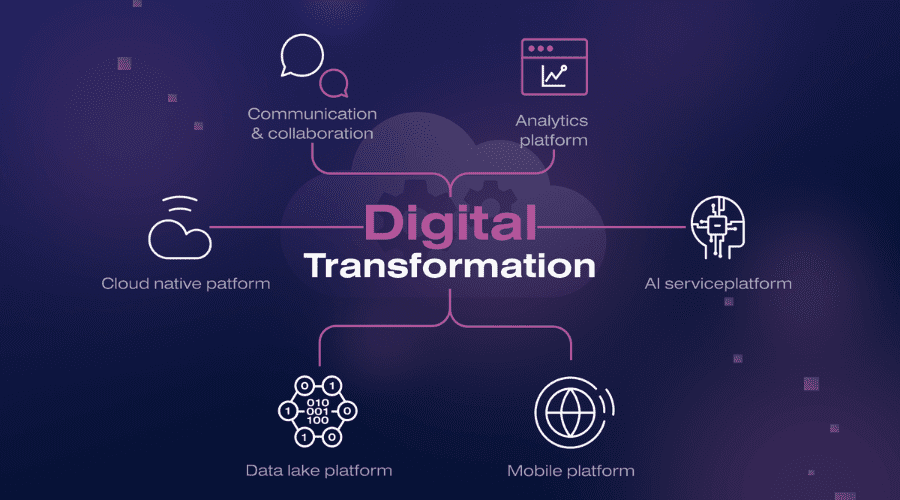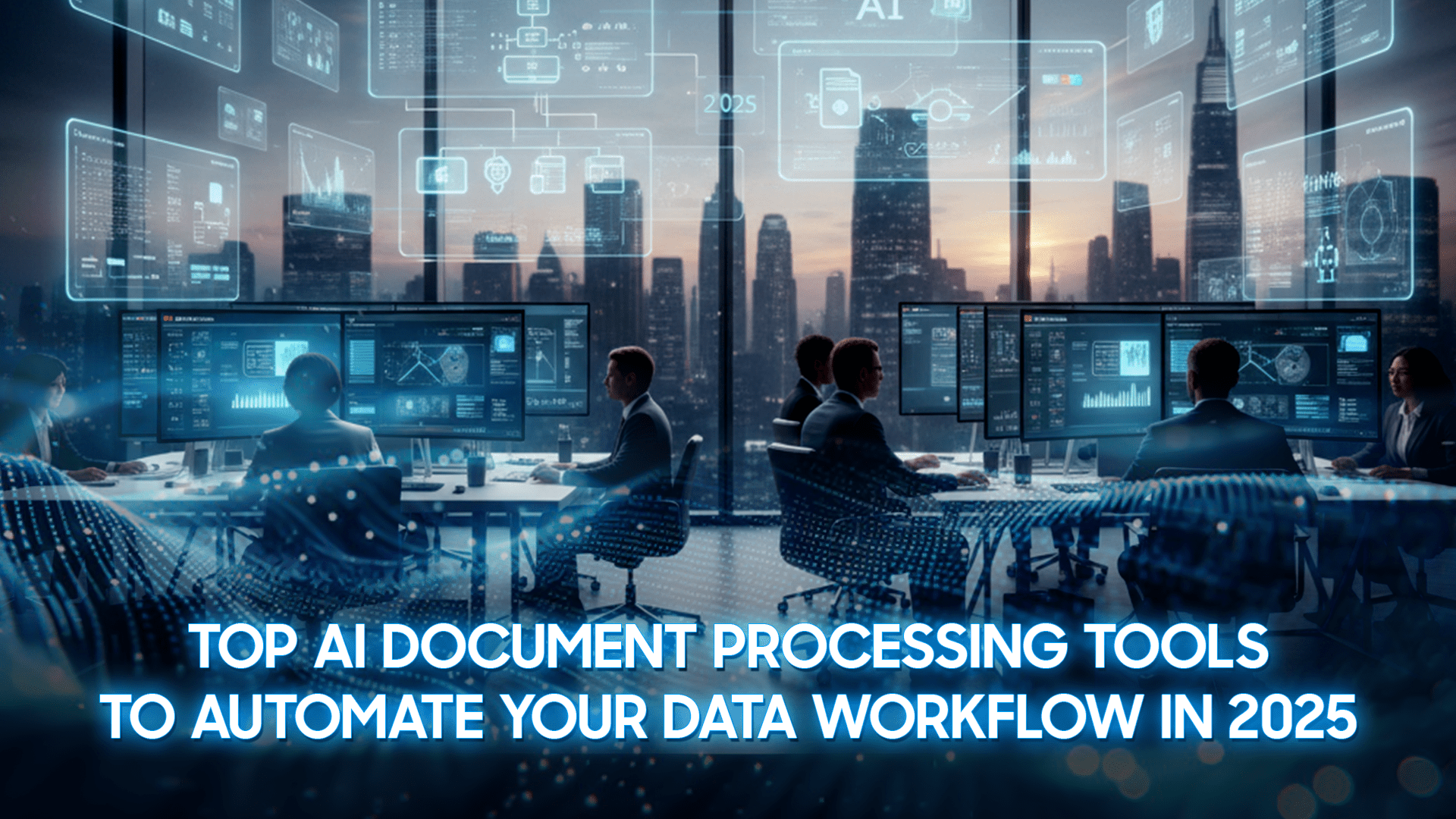Digital Document Transformation is now a vital step for companies to operate effectively in the rapidly moving digital economy of today. It impacts all areas of your business, from internal efficiency and customer engagement to remote staff support and secure, traceable compliance procedures, all built around how your documents are handled.
As your business develops and evolves, your document strategies need to keep up with it in order to remain competitive and compliant. To find out how this transition will serve your company, read on for our in-depth article on digital transformation document management.

What Is Digital Document Transformation?
Digital Document Transformation refers to the process of scanning paper documents and converting them into formatted digital data that is searchable, business applications-integrated, and available for business processes to take advantage of.
It’s more than simply scanning—it forms the basis for more intelligent business processes, enhanced regulatory compliance, and the potential for enterprise-wide scaling of automation. The path taken by digital document transformation generally consists of a few key steps:
- Document capture entails the acquisition of documents of different sizes and types using high-speed scanners, which read physical documents and convert them into digital format. Such new-generation scanners scan everything from crumpled papers to multi-page documents in shades of different colors or forms without any disruption in work processes, even at high-document-level levels of work environments.
- Classification and data capture are facilitated by clever software that can determine document types as well as capture key information, such as names, dates, sums, and reference numbers. Through AI, these applications learn and recognize patterns and therefore improve step by step, reducing the amount of manual data input.
- Validation and quality checks allow only correct, complete data to proceed in the process. Business rules coded inside automatically detect missing data or errors, and exceptions are minimized. Hand reviews are reserved for special cases alone, accelerating the workflow and ensuring high data integrity and audit readiness.
- System integration enables the printed documents and their respective metadata to feed directly into business apps like ERP, CRM, or content management. This obviates manual redundant data entry, enables quicker decision-making, and provides a single real-time source of truth for the business.
- Secure storage and retrieval come next, with files retained in secure digital repositories, indexed for quick retrieval. Role-based permissions permit users to view only that which they are authorized to view, and audit trails record all activity for compliance reasons. On-demand access to records lets teams work faster and more productively and reduce risk.
=> Discover our Document Scanning and Archiving Solutions built for automation and compliance.

Digital Document Transformation refers to the process of scanning paper documents
Why Does It Matter for Your Business?
With firms facing increasing pressure to accelerate activities, eliminate wastage, and achieve higher customer satisfaction, digital document transformation has become a commercially critical force behind competitive excellence. The following are the primary reasons for its rising relevance:
- Operational effectiveness is significantly enhanced by substituting paper-based processes with electronic processes. Physical routing, storage of paper-based documents, and redundant data entry delays are eliminated. Operations that took days now get done in minutes.
- Automation and secure document management enhance compliance and audit preparedness. With more stringent regulations pertaining to access to information, privacy, and retention, an electronic solution ensures accurate storage of documents, standardized naming, and follow-up with full audit trails.
- Decision-making is quicker and better if the leaders access consolidated digital information directly. Rather than waiting for manually created reports, they can utilize real-time visualizations and dashboards to inform business decisions.
- Customer interactions are improved through the delivery of fast, consistent, and seamless interactions. From completing forms, placing requests, to bill payments, a digitally coordinated process removes confusion and delays.
- Business continuity is more secure with the capability to save and retrieve documents in safe virtual repositories. In contrast to paper documents, electronic documents are automatically backed up and can be restored from any location.
Conversion of digital document transformation provides organizations with the nimbleness, astuteness, and dependability required to thrive in today’s technology-dominated and complexity-complicated business landscape.
=> See more: What Is Automated Document Processing and How Does It Work?

Digital document transformation has become a commercially critical force behind competitive excellence
Common Challenges and How to Solve Them
Converting workflows into digital form has a number of challenges. But with the appropriate strategy and technology, organizations can win against them and thrive in their digital document transformation process.
- Large volumes and disparate formats: Organizations tend to handle millions of documents of varying size and condition. Sorting manually will cost time and introduce errors. Intelligent scanners that process disparate media minimize prep time and maximize efficiency.
- Unstructured or handwritten information: Conventional OCR software does not handle handwritten or uncommon layouts. Machine learning-based recognition gets better with time, allowing complex forms and historical documents to be scanned.
- Inadequate system integration: Failing to integrate with large systems such as ERP or CRM isolates digital files. With open APIs, digital transformation document management software integrates seamlessly and allows data to be shared in real-time.
- Staff resistance and talent gap: Employees might resist the transition to new technology. Selecting intuitive platforms and providing training boosts confidence. Conformity with known providers can simplify implementation as well.
- Security and regulatory risk: Sensitive information must be secured. Encryptions, role-based access, and audit trails must be part of the change initiative to maintain continuous compliance and minimize exposures.
Through recognizing these obstacles early on and surmounting them with the proper blend of technology, planning, and assistance, organizations can gain from a successful conversion of digital document transformation and eventual return on investment.
=> See more: OCR Document Conversion: How It Works & Why It Matters

Converting workflows into digital form has several challenges
How to Digitize Paper Documents
An advanced document management system does not merely digitize paper; it makes and streamlines document-based processes in general. This is how it gives rise to intelligent digital document transformation:
- Document Capture and Indexing: Sophisticated systems are able to capture documents from various sources like paper-based documents, emails, CRMs, or reports. Captured documents are indexed against metadata such as order numbers or customer names, and retrieval is quick and precise.
- Centralized and Secure Storage: Documents are stored in a centralized repository with user-level access controls. This provides secure, compliant storage with content made accessible immediately to authorized staff members.
- Workflow Automation: Invoicing approvals or order processing are repeated using pre-configured workflows. For example, an incoming invoice can be sent automatically, validated, and ordered for payment without human intervention.
- ERP Integration for Efficient Processes: If linked with ERP systems, document systems can trigger and control workflows from real business processes. This avoids redundant data entry and allows faster operations.
- Deployment Options: Cloud or On-Premises: On-premises deployments offer complete control at the expense of infrastructure, maintenance, and security investment. Cloud systems, vendor-controlled, offer IT burden alleviation with compliance features built in and subscription-based, predictable costs.
From document capture to workflow automation, a document management system is an essential piece to facilitate successful digital document transformation within the enterprise.
=> You might like: How to Automate Invoice Processing in Your Business?

An advanced document management system does not merely digitize paper
Planning for Both Old and New Workflows
Once the need for digital transformation is confirmed, it’s time to redesign your document processes — including document control processes — and establish workflows for future automation.
If your organization still maintains huge amounts of paper documents or electronic files distributed across several systems, Document Logistix can consolidate your content and index it directly into one central repository. This enhances visibility and eliminates search time.
An integrated document management system will bring greater than technical competence. It will enhance governance as well with regulatory compliance, full audit trails, and date-stamped, detailed user activity logs accessible to internal or external audit.
Since Document Manager is a modular solution, your organization will be able to roll out capabilities in phases, beginning with the most valuable capabilities. A phased approach keeps the transformation process manageable and in sync with your employees’ readiness.

An integrated document management system will bring greater than technical competence
In today’s fast-paced business environment, digital document transformation is no longer a choice but a strategic necessity. By streamlining document capture, storage, and workflow automation, organizations can unlock new levels of efficiency, compliance, and agility. A well-planned transformation not only enhances daily operations but also strengthens long-term resilience and data governance.
To begin your journey toward smarter document management, explore the solutions offered by DIGI-TEXX—a trusted provider of digital transformation services with a strong track record in document processing, data capture, and automation. Whether you’re transitioning from paper or consolidating fragmented digital systems, DIGI-TEXX can help you achieve a seamless, secure, and scalable digital document transformation.
=> Read more:


